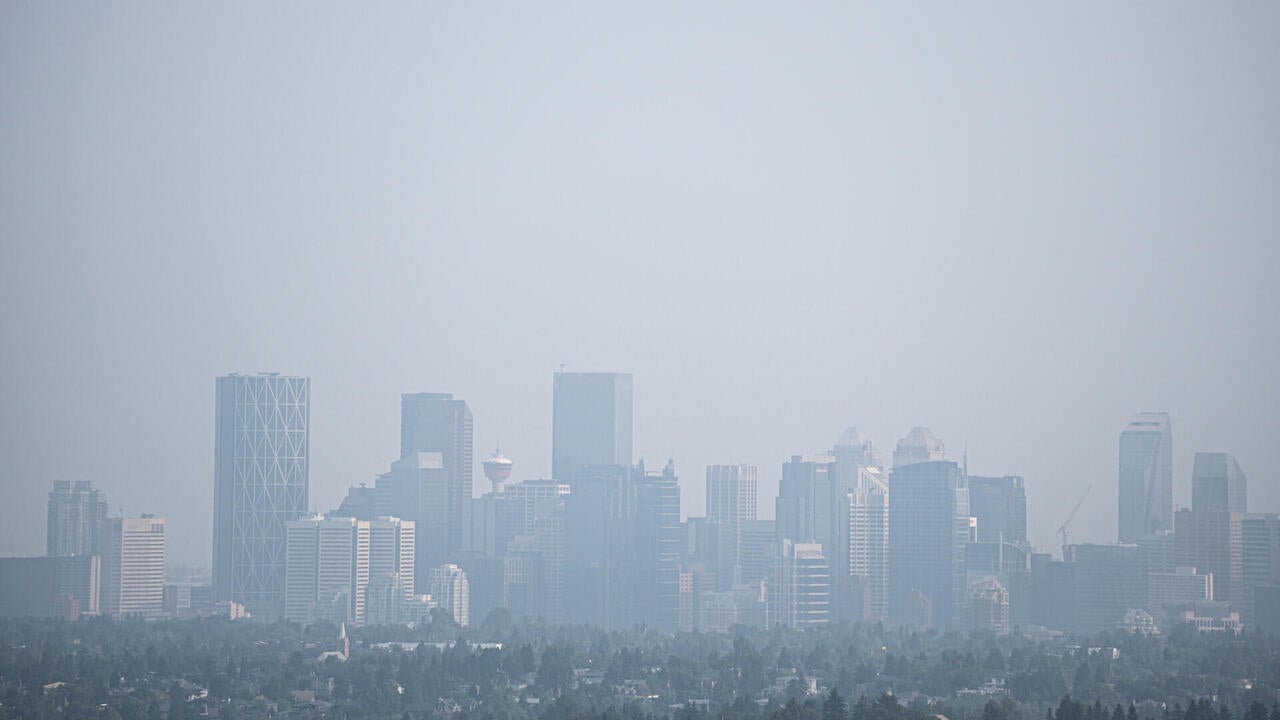
Q and A with the experts: Health risks posed by wildfires
Professor Rebecca Saari examines the immediate and long-term threats to our health from poor air quality

Professor Rebecca Saari examines the immediate and long-term threats to our health from poor air quality
By Media RelationsSeveral wildfires in the Canadian province of Quebec have caused hazy skies and sent air quality plunging in parts of Ontario and the northeastern United States. The most harmful air pollutant worldwide is fine particular matter, with the biggest natural source of this pollutant being wildfires. Professor Rebecca Saari, who studies the consequences of climate change and climate policy on human health and environmental inequality, examines the immediate and long-term threats to our health from poor air quality currently being experienced.
Why are communities so far away from the actual fires seeing so much smoke in the air?
We currently see wind patterns carrying smoke directly from the fires to these populated regions. Fires emit smoke particles directly and other harmful pollutants that can form haze or smog. Particles in the air will settle to the ground depending on their size, with large particles settling quickly and small, submicron particles remaining suspended in the air for several weeks unless they are removed by other processes, like rain. This means that fires can affect air quality locally and on continental scales. These hot, sunny, dry days are conditions that are conducive to fires, haze, and smog.
What is the immediate health risk to people in Canada and the US experiencing poor air quality due to wildfires?
People may experience various symptoms, like irritation of the nose and throat, coughing, or headaches. Numerous studies show links between wildfires specifically, and respiratory symptoms. People with underlying health risks, especially respiratory and cardiovascular illness, are at higher risk for more serious outcomes, like asthma attacks, that may require hospitalization.
What are the long-term health risks of prolonged or repeated exposure to poor air quality caused by wildfires?
The evidence suggests that the long-term risks are serious. Health Canada estimates that over 15,000 Canadians die prematurely due to exposure to air pollution, with over 35 million acute respiratory symptom days per year. The current estimated economic burden from air pollution is $120 billion per year. Wildfires are the largest contributor to population-weighted particulate matter, which is the pollutant that does the most harm to public health.
What measures can individuals likely to be exposed to air pollution from wildfires take to protect themselves during the fire season?
Pay attention to air quality alerts and follow the associated guidance provided by the Air Quality Health Index. This typically involves reducing exposure by limiting time outdoors during severe pollution episodes, especially for vigorous physical activity. When indoors, keep doors and windows closed, and run filtration (e.g., with a central HVAC system with an air filter or with an indoor air purifier). If you cannot avoid exposure otherwise, consider a well-fitting N95 mask, which offers protection from smoke particles.
This series is produced for the media, and its purpose is to share the expertise of UWaterloo researchers. To reach this researcher, please contact media relations.

Waterloo researcher Dr. Tizazu Mekonnen stands next to a rheometer, which is used to test the flow properties of hydrogels. (University of Waterloo)
Read more
Plant-based material developed by Waterloo researchers absorbs like commercial plastics used in products like disposable diapers - but breaks down in months, not centuries

Read more
Here are the people and events behind some of this year’s most compelling Waterloo stories

Read more
15 University of Waterloo researchers have been named to the annual Highly Cited Researchers™ list for significant contributions to their specific fields of research
The University of Waterloo acknowledges that much of our work takes place on the traditional territory of the Neutral, Anishinaabeg, and Haudenosaunee peoples. Our main campus is situated on the Haldimand Tract, the land granted to the Six Nations that includes six miles on each side of the Grand River. Our active work toward reconciliation takes place across our campuses through research, learning, teaching, and community building, and is co-ordinated within the Office of Indigenous Relations.